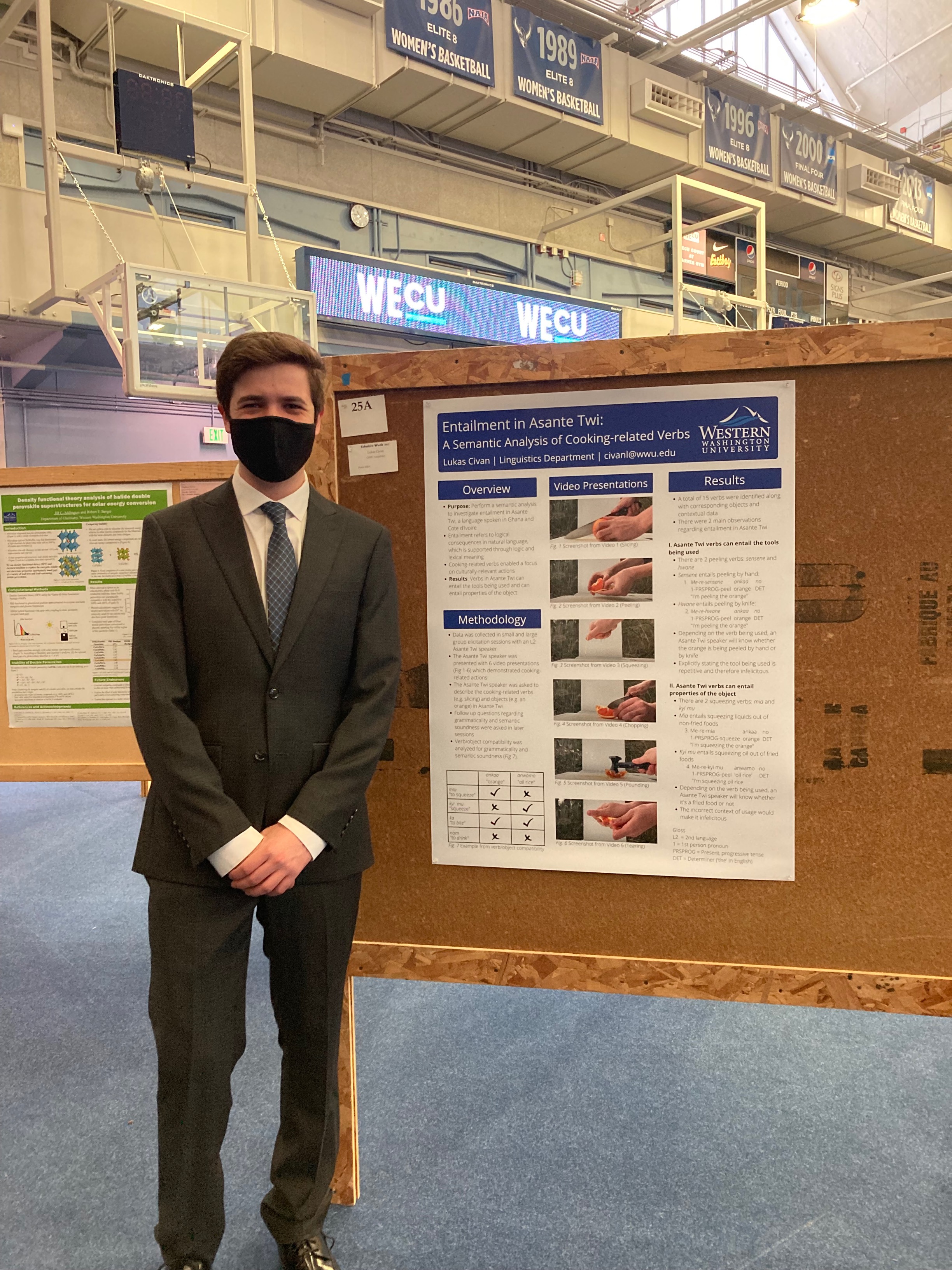WWU Student Lukas Civan to present at NWLC 38

Lukas Civan, '22, will be presenting "Entailment in Asante Twi: A Semantic Analysis of Cooking-related Verbs" at the Northwest Linguistics Conference on May 28, 2022. Civan also presented this research at Western's 2022 Scholars Week.
Abstract: A semantic analysis was performed to investigate entailment in Asante Twi, a language spoken in Ghana and Cote d'Ivoire. Research was based on the work of Bohnemeyer, Bowerman and Brown (2001), who studied the cross linguistic semantic domain of cutting and breaking verbs using video stimuli.
Data was collected in small and large group elicitation sessions with an Asante Twi speaker. The speaker was presented with six video stimuli that demonstrated various cooking-related actions, which included: slicing, peeling, squeezing, chopping, pounding, and tearing. The speaker was asked to describe these verbs in Asante Twi. Follow up questions regarding grammaticality and semantic soundness were asked in later sessions. Once data was collected, verb/object compatibility was analyzed for grammaticality and semantic soundness.
Two main observations were recorded, along with fifteen verbs and corresponding objects with contextual data. First, Asante Twi verbs can entail the tools being used. For example, there are two peeling verbs in Asante Twi: sensene and hwane. Sensene entails peeling with a knife, whereas hwane entails peeling with hands. Although both verbs refer to peeling, the verb entails the tool being used, resulting in speakers being able to know whether the peeling is occurring by knife or by hand. The explicit stating of the tool being used is repetitive and therefore infelicitous. Second, Asante Twi verbs can entail properties of the object being acted upon. For example, there are two squeezing verbs in Asante Twi: mia and kyi mu. Mia refers to squeezing liquid out of non-fried foods, whereas kyi mu refers to squeezing oil out of fried foods. Both verbs describe squeezing actions, however, the properties of the object being squeezed are important. These verbs entail properties of the object, e.g. a speaker would be able to know whether the object being squeezed is fried or not. Verb usage in an incorrect context makes the statement infelicitous, e.g. using mia with fried foods or kyi mu with non-fried foods. Both observations align with the findings of Agyepong and Osam (2020), who also studied Asante Twi lexical semantics using video stimuli.
Future experiments could center on the semantic cutting/breaking paradigm or the production of video stimuli which focus on other cooking-related actions which are culturally relevant, such as grilling, or culturally relevant foods, such as fufu or plantains.
